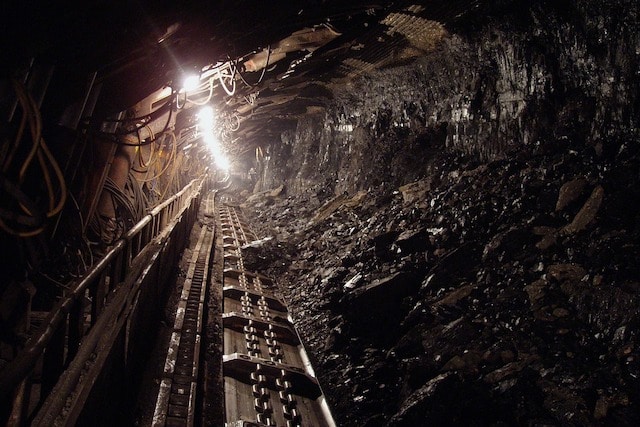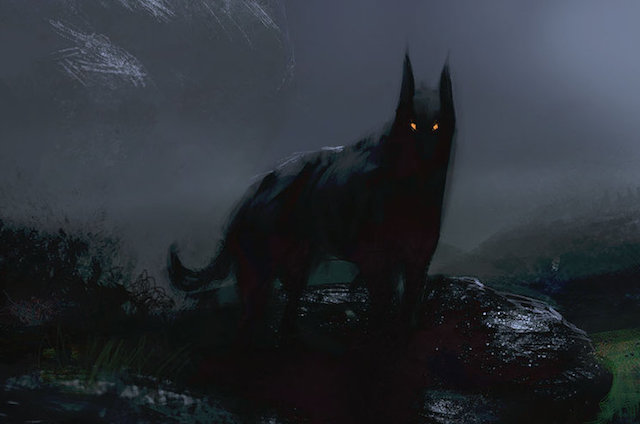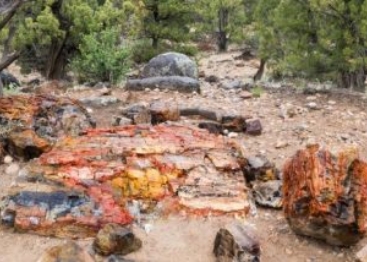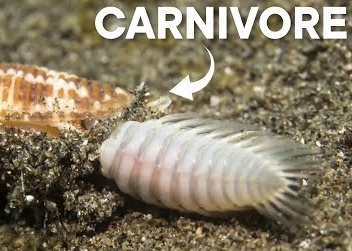The 10 Most Bizarre Things Ever Found in Abandoned Mines
Some of the deepest mines on Earth plunge miles below the surface, reaching into the planet’s dark, hidden depths. These massive pits have been dug to extract everything from everyday salt and precious gold to rare metals like tantalum and gallium. But every now and then, you stumble upon a mine that’s not famous for what’s buried in its rocks—but for the strange, unexpected inhabitants that call it home.
Imagine descending into one of these vast, shadowy chasms, where the air grows cooler and the light fades with every step. While most mines are all about the treasures they hold, some have become known for something far more unusual. Whether it’s colonies of glowing fungi, rare species of blind fish, or even mysterious microbes thriving in extreme conditions, these mines are less about the ore and more about the weird and wonderful life forms that have made them their habitat.
It’s a reminder that even in the most inhospitable places, life finds a way to adapt and thrive. So, while we dig deep for resources, sometimes the real treasures are the surprises waiting in the darkness. If you’re fascinated by the strange and unexpected, these mines are proof that the Earth still has plenty of secrets to uncover.
10.A Preserved Body

Finding a body in a mine is, sadly, not as rare as you might think. Mining disasters have claimed millions of lives over the centuries, especially in coal mines. While safety has improved dramatically in the last hundred years, the history of mining is filled with tragic stories. But one discovery in 1719 at the Falun copper mine in Sweden stands out as truly bizarre—and downright eerie.
Miners were working in a flooded section of the mine when they pulled out a body. The man was missing his legs, but otherwise, he looked remarkably well-preserved. His clothes were intact, and his body seemed fresh, as if he had died just days before. This was strange because that part of the mine hadn’t been used in years. How could someone have died there so recently?
The mystery deepened when the body was put on display, hoping someone might recognize him. A woman named Margaret Olsdotter came forward, claiming the man was her fiancé. She said he had vanished 42 years earlier. Yes, 42 years. Somehow, his body had remained almost perfectly preserved in the mine’s toxic, copper sulfate-rich water.
As the body dried out, it began to petrify, turning hard like wood. The minerals in the water had essentially mummified him. But once exposed to air, the preservation process reversed, and the body started to decay.
Here’s where it gets even weirder: instead of giving him a proper burial, the townspeople kept the body on display for 30 years. Eventually, he was buried in a church, only to be rediscovered during renovations years later. Finally, he was laid to rest in a cemetery.
The story of the Falun miner is a haunting mix of tragedy, science, and morbid curiosity. It’s a reminder of how mining has shaped human history—and how sometimes, the Earth gives up its secrets in the strangest ways. If you’re into tales that are equal parts fascinating and unsettling, this one’s for you.
9.A Data Archive

Once mining operations are done, a mine is a big, empty space with not a lot of purposes. Some places store toxic materials in them. But others are storing more useful things. As it happens, a man is a perfect environment for preserving just about anything. Temperature and humidity are ideal for storing something like a data archive.
GutHub has archived over 21 terabytes of data from their servers, open source software they want to preserve for future generations, and taken it to a mine in the Arctic. In July 2020, they stored everything in the Archive Code Vault in Norway.
Now the data lives in a retrofitted storage contained in a decommissioned coal mine. If all goes as planned, the coded material should stay safe and sound for at least 1,000 years.
8.A Wild, Toxic Dog

Every now and then, a stray animal becomes a local legend, a furry mascot that everyone in the community knows and loves. That’s exactly what happened with a scruffy dog known as The Auditor, who made his home in an unlikely place: the Berkeley Pit, a massive open-pit copper mine in Montana.
The Auditor was a free spirit, coming and going as he pleased. He’d vanish for weeks at a time, only to reappear and charm miners and workers into sharing their snacks. Despite their kindness, he was a shy dog, always keeping his distance and avoiding direct contact. Still, he became a familiar face around the mine, earning his name because he’d show up unexpectedly, like an unannounced audit.
First spotted in 1986, The Auditor lived a surprisingly long life for a stray, passing away in 2003 at the age of at least 17. But what’s even more astonishing is what scientists discovered after his death. An environmental engineer tested The Auditor’s fur and found something shocking: the dog had been living in the toxic mine for so long that his body had absorbed staggering levels of chemicals. His fur contained arsenic at 128 times the normal level for a dog.
How did he survive so long in such a harsh environment? It’s a mystery. The Auditor’s story is a mix of resilience, community spirit, and a touch of the bizarre. He wasn’t just a stray—he was a survivor, a quirky symbol of life thriving in the unlikeliest of places. If you’re into tales of unexpected heroes and the strange ways animals adapt, The Auditor’s story is one you won’t forget.
7.The Titanoboa
The largest snake in the world is the green anaconda. Although a reticulated python may be longer, the anaconda is far heavier. It can weigh over a quarter of a ton and reach 30 feet in length. The idea of an anaconda devouring a human is not far-fetched, though reports of this ever happening are extremely rare. For many people, it is the ultimate nightmare animal. But it could be worse.
In a coal mine in Colombia, the fossil of a snake was discovered that blows any anaconda on earth today out of the water. The snake, dubbed the Titanoboa, reached a length of 40 feet. And while that length is dramatic, it’s not too hard to believe compared to some current pythons and anacondas. But it’s the mass of the snake that makes it remarkable. Titanoboa would have weighed over 2,000 pounds. One full ton of snake. That’s about the weight of a black rhino or a moose.
At its thickest part, the back of a Titanoboa would have been the same height as a full-grown man’s waist. At this size, there was likely no prey too large for it back when it slithered through swamps, around 58 million years ago.
6.Federal Retirement Files
When you think about retirement, you probably imagine a straightforward process: some paperwork, a few signatures, and maybe a farewell party. But if you’re a federal employee in the U.S., your retirement records aren’t just sitting in some office filing cabinet—they’re buried 630 feet underground in an old limestone mine in Boyers, Pennsylvania. Yes, a mine.
Iron Mountain, as the facility is called, is home to the Office of Personnel Management’s records. Every single piece of paper related to federal employee retirements ends up here. About 7,000 federal workers retire each month, and truckloads of paperwork arrive daily to be stored in the mine. Despite having around 600 employees working tirelessly to process these records, the backlog is massive. It’s a never-ending mountain of paper—literally.
Why a mine? Simple: space. The government generates so much paperwork that they need a massive, secure place to store it all. And while it might seem logical to switch to digital records, that hasn’t happened yet. In fact, even the work they do on computers gets printed out and filed away in the mine. It’s a system that’s been criticized for decades—Congress first pointed out its inefficiency back in 1981—but changing it seems to be as slow and cumbersome as the process itself.
It’s a strange mix of old-school bureaucracy and modern inefficiency. While the rest of the world has moved on to cloud storage and digital databases, the federal government’s retirement records are still tucked away in a dark, dusty mine. If you’re fascinated by how systems can get stuck in the past, this is a perfect example of how even the simplest changes can be surprisingly hard to make.
5.Two-billion year old water

Water in a cave doesn’t qualify as unusual. Caves are often damp places, and underground lakes and rivers have existed for eons. But not all water is created equal. Nor is it created at the same time. In one mine in Canada, the water they discovered there predates multicellular on Earth.
The water was discovered deep in a mine in Timmins, Ontario. The age was determined by analyzing traces of elements like helium and xenon discovered in the water. For scientists, it was a bonanza, as it was the oldest water ever discovered, and shed some light on what ancient Earth might have been like.
Technically speaking, the water isn’t toxic. It has trace elements in it, but drinking it would be a bad idea. It’s also eight times saltier than seawater.
4.A Bike Trail

If you enjoy bike riding for fun or exercise, then you probably know more than a few local bike trails. Depending on where you live, these can take you through some really beautiful parts of town and the surrounding countryside.
If you head to the lead and zinc mines in Mežica, a town in Slovenia, you’ll find arguably the most unique bike trail in the world. The Black Hole Trail is about 10km long and descends into the earth 150 meters over 5 different levels. The mine itself was abandoned over 25 years ago until someone got the bright idea to bring it to life again as a trail.
It’s a challenging enduro trail for serious riders, and you can’t navigate it without a guide. Like any mine, there are a lot of twists and turns that could be dangerous if you don’t know where you’re going.
3.A Stash of 1930s Cars

In 2016, a Belgian teacher was exploring a mine in a French quarry—because, why not?—when he stumbled upon something straight out of a history book. Deep underground, he found tunnels filled with old European cars, some dating all the way back to the 1930s. The vehicles were clearly showing their age, rusted and worn, but it was obvious they hadn’t ended up there by accident. Someone had parked them there deliberately, nearly a century ago.
The most likely explanation? World War II. During the war, the German military often seized cars for their own use. It’s believed this mine was used as a secret hiding spot to stash these vehicles until the conflict ended. But here’s the twist: whoever hid them never came back to claim them. The cars were left to gather dust—and rust—for decades, forgotten in the dark depths of the mine.
Today, these rusted relics aren’t worth much in terms of money, but they’re a fascinating piece of history. They tell a story of war, secrecy, and the strange ways people tried to protect their belongings during chaotic times. If you’re into tales of hidden treasures and forgotten history, this mine full of vintage cars is a discovery that’s as eerie as it is intriguing. It’s a reminder that sometimes, the past is buried just waiting to be found.
2.A Theme Park
Salina Turda may not sound enticing to English-speaking thrill seekers, but it’s definitely worth a look if you want some unique fun. Located in Romania, the Salina Turda mine was a salt mine that dates back an incredibly long time. The first mention of it in books was from the year 1075. It continued producing salt for hundreds of years until 1932.
During the Second World War, the mine saw use as a bomb shelter before being shut down yet again.
In the 1990s, after some extensive and expensive renovations, the mine was reopened to the public. Not just a halotherapy spa, which means salt therapy, it’s also a subterranean amusement park.
The facility features mini-golf, bowling, a Ferris wheel, an underground lake, and billiards, among other things. It’s located 120 meters down and you can choose to take the elevator or try the stairs.
1.World’s Largest Freshwater Dive Resort
Deep beneath the town of Bonne Terre, Missouri, lies a hidden wonder that’s as fascinating as it is unexpected. The Bonne Terre lead mine, carved into the rock over a century, was abandoned in 1962 when the company running it shut off the power—including the water pumps. Over time, water began to flood the mine, and by the 1970s, the three lowest levels were completely submerged. Today, this flooded labyrinth stretches across 88 miles of tunnels, creating the world’s largest underground freshwater lake.
Known as the Billion Gallon Lake, this underwater marvel is now a one-of-a-kind dive resort. The current owners have installed over 500,000 watts of lighting, illuminating the crystal-clear water that stays at a constant temperature year-round. Visibility is incredible, allowing divers to explore the eerie remains of mining equipment left behind when the mine closed. Some areas plunge 40 to 60 feet deep, with winding tunnels that are only accessible to experienced divers.
Above the water, there’s 17 miles of navigable shoreline, adding to the surreal beauty of the place. It’s a mix of history and adventure, where the echoes of the past meet the thrill of exploration. Whether you’re a diving enthusiast or just love a good story, the Bonne Terre mine is a reminder that sometimes, the most incredible places are hidden right beneath our feet.
























